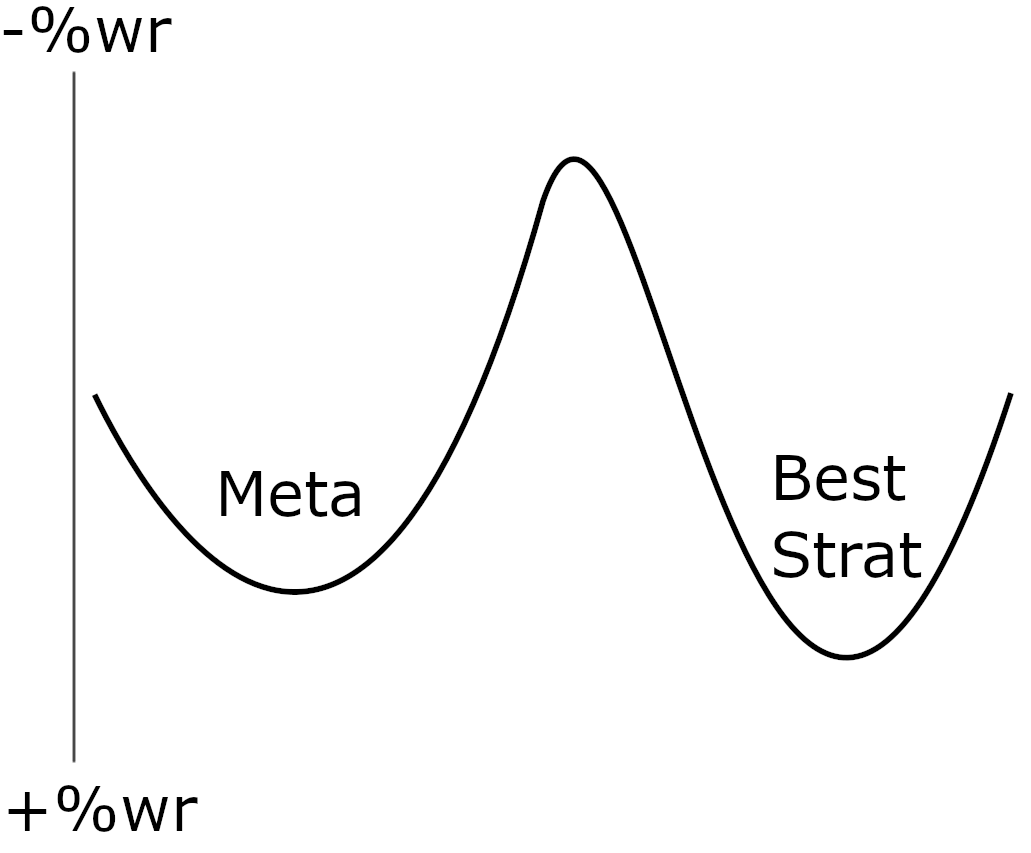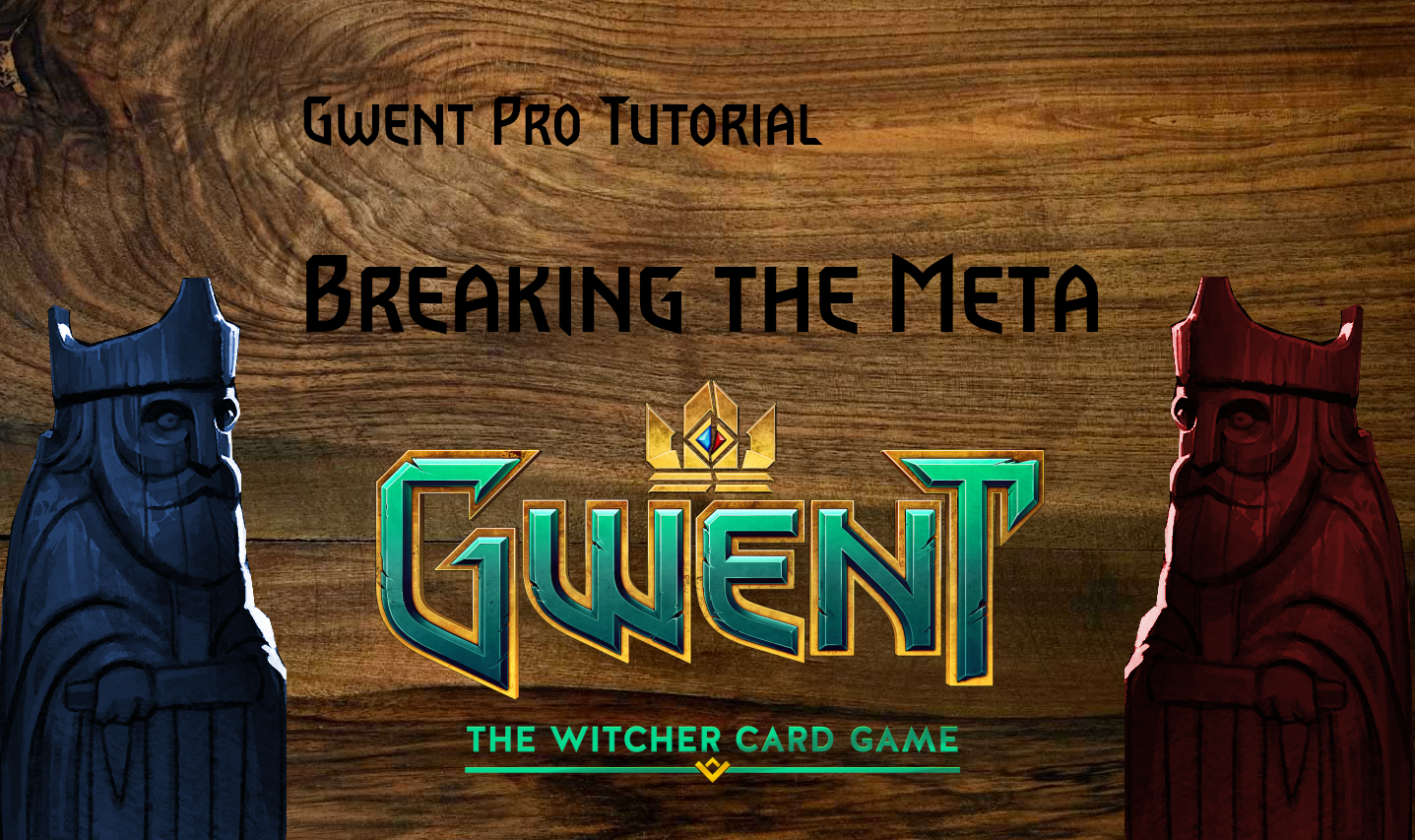Introduction
Finding a metabreaker is perhaps the most satisfying feeling in Gwent Pro Ladder competition. Neglecting some optimizations of the main decks or climbing to 2600 MMRs with original homebrews (my last one is here), I had real metabreaker feeling twice.
Hope you’re excited for the rest of the tutorial now. Meta is our opponent, so let’s start from gathering all the possible knowledge about her.
What Is Meta?
There is more than one definition of the meta. Let’s cite the general one from Wikipedia:
In video gaming and esports, a metagame, or “meta”, is the optimal or most dominant strategy. Metas are usually determined by the community of the game in question. Depending on the game, this may indicate characters, decks, items, or other choices used most frequently in top-tier or professional play. It could also indicate optimal tactics and strategies. Metas may change when the developers of a game make changes to the strength of certain game elements, known as “buffs” and “nerfs” for increases and decreases in utility, respectively.
According to Team Aretuza glossary, the name originates in META (‘Most Effective Tactics Available’) acronym, which emerged in MMO games.
If you happened to study Physics or Chemistry you might also came across metastable states. If we replace energy with the average winrate, then we obtain a perfect analogy of what card games meta is.
Meta Landscape

Meta is a very successful (on average) strategy applied by most competitive players in a given game. Meta is always defined against a set of optimal strategies.
By optimal strategies in Gwent we mean decks clearly superior to other ones relying on the same gameplan in the same faction. Meta is then a set of decks which is perceived as having best winrate against optimal strategies.
Let’s now concentrate more on the depicted situation. Meta could jump from one deck set to another during the season (especially early on). Each time the jump takes place across a ‘hill’ (the middle of the picture). Small deviations from the Meta valley lead only to worse %wr (that’s why meta stales for a period of time). One day though a new deck or concept may overcome the hill, and we land in a new valley, new meta.
Towards the end of the season, we reside in one of the deepest valleys (final meta). Still, there could exist a better set of ladder decks, but the invention barrier is too high for the community to overcome the hill.
Metabreakers
Where are Metabreakers in this picture? We are ready to answer this question now.
- Metabreakers could be the aforementioned agents helping to overcome the hill and land in the new meta. (self-defined)
- Alternatively, it could be a set of unknown/forgotten optimal strategies, which do well against meta, but are not amazing against whole set of optimal strats (counter-defined)
When to use a Metabreaker?
- Self-defined metabreakers could grant you respect in the community if revealed early in the season, but nothing more. Meta will evolve, your initial fMMR intake would stop to matter in the long run. If going for competitive achievement you have to freeze self-defined metabreaker and use it last days of the season only, when opponents wouldn’t have time to adapt.
- Counter-defined metabreakers are generally weaker decks than self-defined, but easier to find. Early in the season these would give you no long-term advantage; designing them is pointless unless you are a step ahead, predicting final meta. On the other hand, it is very useful to develop a toolbox of them to instantly react to meta shifts. Unlike self-defined, counter-defined mb’s could be played with no risk of netdecking early season, especially when tested for the future meta.
Building a Metabreaker
Start of the season
Objective: Finding late season meta
At the start of the season usually balance patch and/or new cards are released. Last season meta and best performing decks are most often accessible.
- Are there new optimal strategies?
- Did some of the old optimal stategies got overriden?
- What is the type of the most powerful cards now? (pointslam/engine/control)
(just a reminder – strategy is optimal when there is no deck doing the same but better in a faction)
For example in Patch 10.1 the most impactful change has been Milva:Sharpshooter nerf. It means that the meta should lean more towards engine play. Moreover, King of Beggars got more provisions, but is still powerful. It is a pointslam card and extra provision cost also should mean less freedom in defining SY character. Consequently the fate of the two most impactful cards leads to optimal engine strategies coming back into play. Indeed, at this stage of the season we observe Northern Realms as well as Keltullis back in the game.
The question is to find invariant top meta decks based on the real matchup table. What would be Top2 factions, which optimal strategies would they choose? Are there one deck factions? What would be most popular? (Pro Ladder data may come handy here).
Start of the season is generally the time to try various stuff, study matchups and build meta knowledge to the point where the evolution of ladder could be roughly predicted.
Early season
Objective: Finding decks with good matchups against predicted high-end meta
Good matchups against main meta decks is the first step for both s-d and c-d metabreakers! Cut out optimal decks with bad matchups and make a shortlist. If you compete for the highest places, like Top16, the mainstream meta doesn’t interest you. Only most often queued decks and factions on the future 2600 level matter.
Some useful questions to ask:
- does top faction have some common weaknessess? (how could you exploit those?)
- are there factions represented by a single deck? (good matchup against this deck is worth twice as much as good matchup against one deck of a faction with the same popularity, but represented by two decks on equal footing)
- what is the charateristic of gold cards in the main decks? (does your golds trade well with them? What gold set would give you most relative value?)
Objective: Adaptable grind
Late season is generally too late for any experiments – new decks and cards would be undertested and probably bad. It is time for grind, releasing s-d metabreakers out of the box and adapting to the day-by-day meta with c-d metabreakers.
Closure
Thanks for reading! Well, perhaps not too much about good deckbuilding here, but proper articles will come yet. For the moment being I hope I explained how meta and metabreakers work, what to do and what not. Stay tuned!

